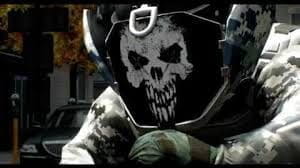Title: SpaceX’s Crew Dragon Completes Historic Test Mission To The International Space Station
Article Date: March 11, 2019
News Type (circle one): Local State National World
Summary: After the U.S shuttle program ended in 2011, astronauts from all nations have been relying on the Russian Soyuz spacecrafts to take, and bring back, astronauts from the ISS. It costs NASA $70 million just for one trip, and if there is a spaceship malfunction, then all of that is wasted. But now, there might be alternate way for astronauts to go to space, at the same time being cheaper than the Soyuz.
The stunning mission began on Saturday, March 2, 2019 at 2:49 A.M, eastern time, when the SpaceX Falcon 9 craft blasted off from NASA’s Kennedy Space Center with a “Crew Dragon” spaceship in tow. After 10 minutes, the rocket’s reusable first stage made a perfect landing on the company’s drone ship, “Of Course I Still Love You”, waiting in the Atlantic ocean. After about 27 hours in space, at 5:51 A.M EST on March 3, 2019, the capsule docked at the space science laboratory. In addition to its 400 lbs of supplies, the Crew Dragon also carried a mannequin astronaut named “Ripley”. Ripley was covered with sensors around its head, neck and spine, all which were monitoring how a human would fare on the flight.
After its five-day stay, the Crew Dragon autonomously (automatically) undocked from the ISS and with Ripley still on board, made its way back to Earth. “Everything happened just perfectly, right on time the way that we expected it to,” said Benjamin Reed, director of crew mission management in SpaceX, in a live stream from California.
The spacecraft will be used for a second flight as early as April 2019!!! The mission will test the “inflight-abort” system, designed to rescue the crew from death if the rocket experiences a glitch. The system in comprised of eight ‘SuperDraco” thrusters that can, in the event of a disaster, ignite during the ascent and fly a Crew Dragon capsule away from its failing rocket.
If everything goes according to plan, in June 2019, the Crew Dragon will transport its first two human passengers: NASA astronauts Bob Behnken and Douglas Hurley; to the ISS for a week-long stay.
Even though Space X is the first to complete a test mission, it is not the only private company drawn together by NASA to build the “taxis” of the future. Boeing plans to test their Starliner spacecraft, which can carry seven astronauts at once.
In conclusion, in addition to release the pressure on Soyuz and reducing costs, the SpaceX and Boeing rockets will be able to transport a total of eleven astronauts max, a considerable increase from the current three. This will mean more scientists transported to the ISS, and hopefully safe space travel.
Personal Response-Address one or more of these areas: why you chose the article, why the information is important, how you feel about it, what action you think should be taken, what you would do to solve the problem. Why does this matter?
I chose this article because I am interested in space and I really want to see what it feels like.
Tweet: SpaceX is working on a new rocket design. Maybe you and I will be in space someday! EC @Assatly4a @DOGONews #foxmeadowpride #iss #galaxy
Remember to include any handles (@) or hashtags (#foxmeadowpride), as well as your initials! Use “Tools” to check character count (with spaces) and be sure to keep it under 140 characters. Each time you want to tweet, share with me so I know there’s something new there.
